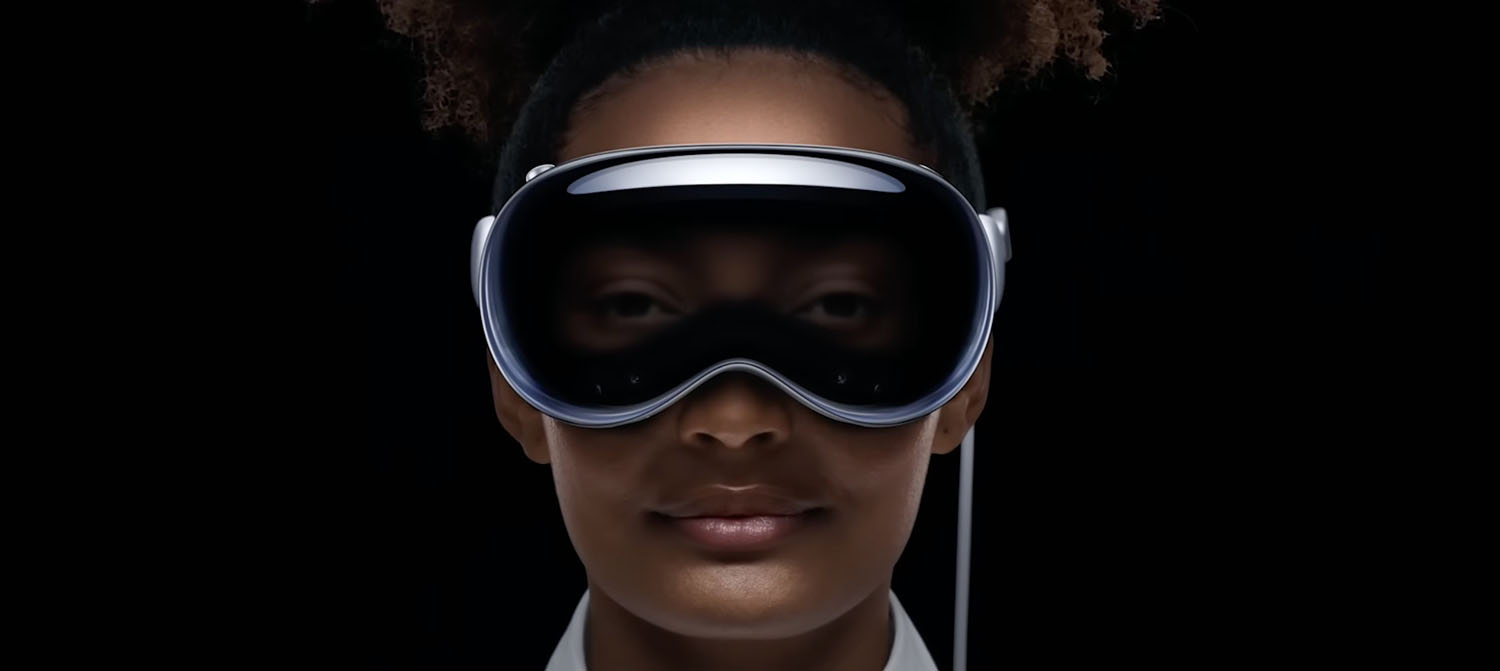
While Apple prepares for the rollout of the first Vision Pro headset for early next year, the company’s product teams are already focused on the next-generation versions. Bloomberg’s Mark Gurman says today that Apple is prioritizing the development of a cheaper model, even at the expense of other initiatives like the AR glasses project.
The company is apparently aiming for a price point in the $1500-$2500 range. One of the ways Apple will save on price, Gurman reports today, is by removing the EyeSight feature that uses an external OLED display to project a rendering of the user’s facial expression to other people.
In the latest edition of his Power On newsletter, Mark Gurman also says Apple will generally reduce the number of cameras and sensors in the cheaper headset, compared to Vision Pro, as another cost-saving measure.
The EyeSight feature is a good candidate for cost-cutting as the feature does almost nothing to benefit the actual wearer of the device. The EyeSight feature primarily helps other people in the room be aware of what the Vision Pro wearer is doing. When the Vision Pro user is in an immersive experience, the display clouds over. When the user is looking at the pass-through video of the outside world, the user’s eyes are rendered.
EyeSight is achieved by projecting a three-dimensional rendering of the user’s face and eyes onto an externally curved OLED panel. The OLED display is framed in lenticular glass, which helps provide an illusion of depth. The Vision Pro continuously tracks its position in relation to the other person in the room, and renders the corresponding perspective of the user’s eyes.
But all of this advanced tech naturally comes at a price. It’s easy to imagine how Apple could reduce the price of Vision Pro bill of materials significantly, if EyeSight is removed. It seems like a good trade-off. If the person buying the headset only ever uses it in a room on their own, they wouldn’t even be able to tell that the feature wasn’t there.
Alongside the cheaper model, Apple is also developing a second-generation high-end Vision Pro too. A major focus of that device will be finding ways to make it lighter and more comfortable to wear, as well as a chip spec bump.
Add 9to5Mac to your Google News feed.
FTC: We use income earning auto affiliate links. More.







![Cheaper Netflix with ads plan is not supported on Apple TV [update: coming soon]](https://www.blackbikertv.com/wp-content/uploads/2022/11/10965-cheaper-netflix-with-ads-plan-is-not-supported-on-apple-tv-update-coming-soon-344x193.jpeg)